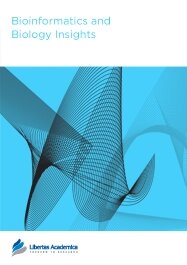

Publication Date: 21 Sep 2011
Type: Original Research
Journal: Bioinformatics and Biology Insights
doi: 10.4137/BBI.S7316

Rhodopseudomonas palustris, a nonsulphur purple photosynthetic bacteria, has been extensively investigated for its metabolic versatility including ability to produce hydrogen gas from sunlight and biomass. The availability of the finished genome sequences of six R. palustris strains (BisA53, BisB18, BisB5, CGA009, HaA2 and TIE-1) combined with online bioinformatics software for integrated analysis presents new opportunities to determine the genomic basis of metabolic versatility and ecological lifestyles of the bacteria species. The purpose of this investigation was to compare the functional annotations available for multiple
R. palustris genomes to identify annotations that can be further investigated for strain-specific or uniquely shared phenotypic characteristics. A total of 2,355 protein family Pfam domain annotations were clustered based on presence or absence in the six genomes. The clustering process identified groups of functional annotations including those that could be verified as strain-specific or uniquely shared phenotypes. For example, genes encoding water/glycerol transport were present in the genome sequences of strains CGA009 and BisB5, but absent in strains BisA53, BisB18, HaA2 and TIE-1. Protein structural homology modeling predicted that the two orthologous 240 aa R. palustris aquaporins have water-specific transport function. Based on observations in other microbes, the presence of aquaporin in R. palustris strains may improve freeze tolerance in natural conditions of rapid freezing such as nitrogen fixation at low temperatures where access to liquid water is a limiting factor for nitrogenase activation. In the case of adaptive loss of aquaporin genes, strains may be better adapted to survive in conditions of high-sugar content such as fermentation of biomass for biohydrogen production. Finally, web-based resources were developed to allow for interactive, user-defined selection of the relationship between protein family annotations and the R. palustris genomes.
PDF (2.02 MB PDF FORMAT)
RIS citation (ENDNOTE, REFERENCE MANAGER, PROCITE, REFWORKS)
Supplementary Files 1 (402.94 KB XLS FORMAT)
BibTex citation (BIBDESK, LATEX)
XML
PMC HTML
Bioinformatics and Biology Insights fills a gap in current journals. Ever more often, bioinformatics and detailed analysis of data creates novel, unexpected insights. It is good to have a journal which focusses on exactly this aspect of bioinformatics research, putting the biology insights upfront with high respect for the different methods in bioinformatics.

All authors are surveyed after their articles are published. Authors are asked to rate their experience in a variety of areas, and their responses help us to monitor our performance. Presented here are their responses in some key areas. No 'poor' or 'very poor' responses were received; these are represented in the 'other' category.See Our Results
Copyright © 2013 Libertas Academica Ltd (except open access articles and accompanying metadata and supplementary files.)
FacebookGoogle+Twitter
PinterestTumblrYouTube